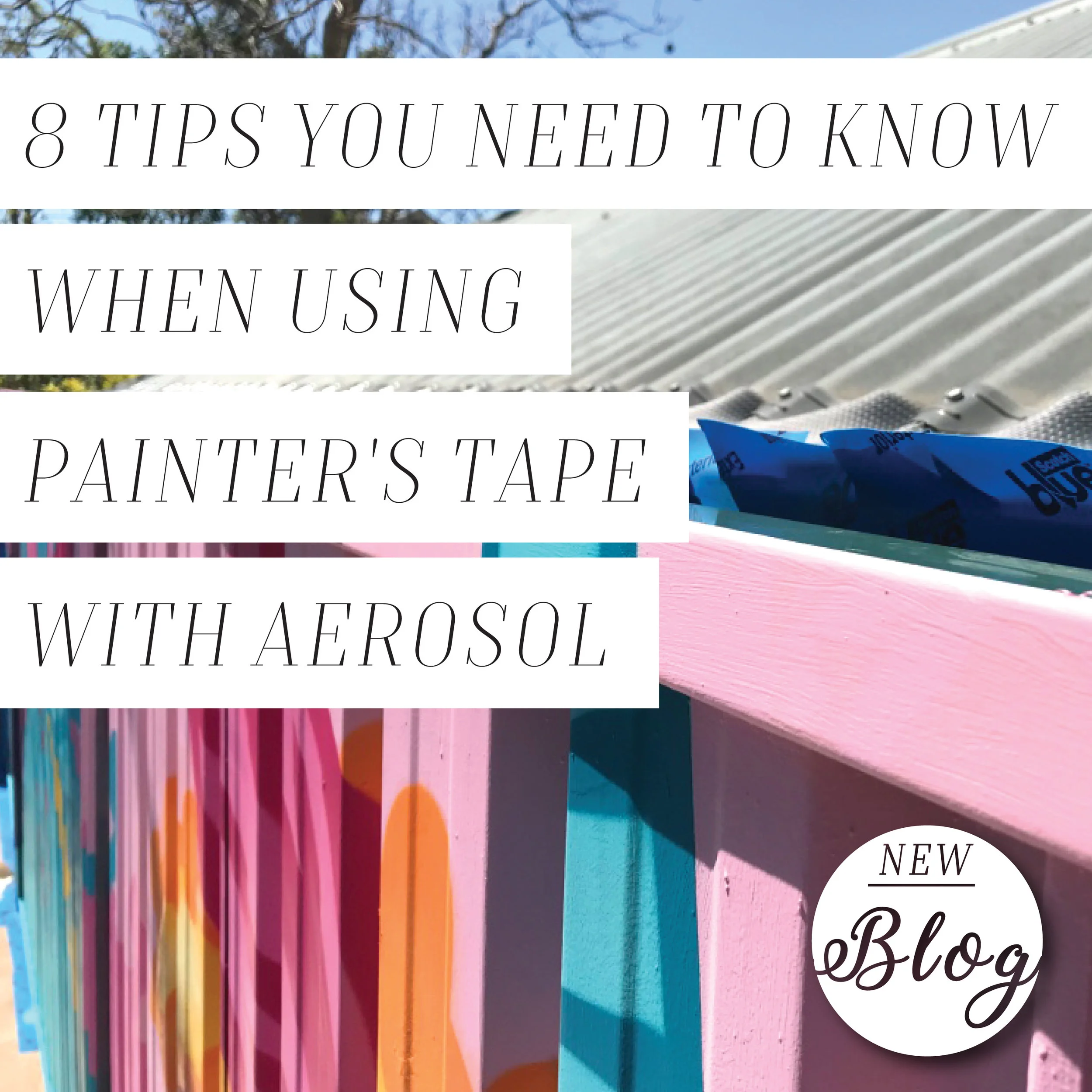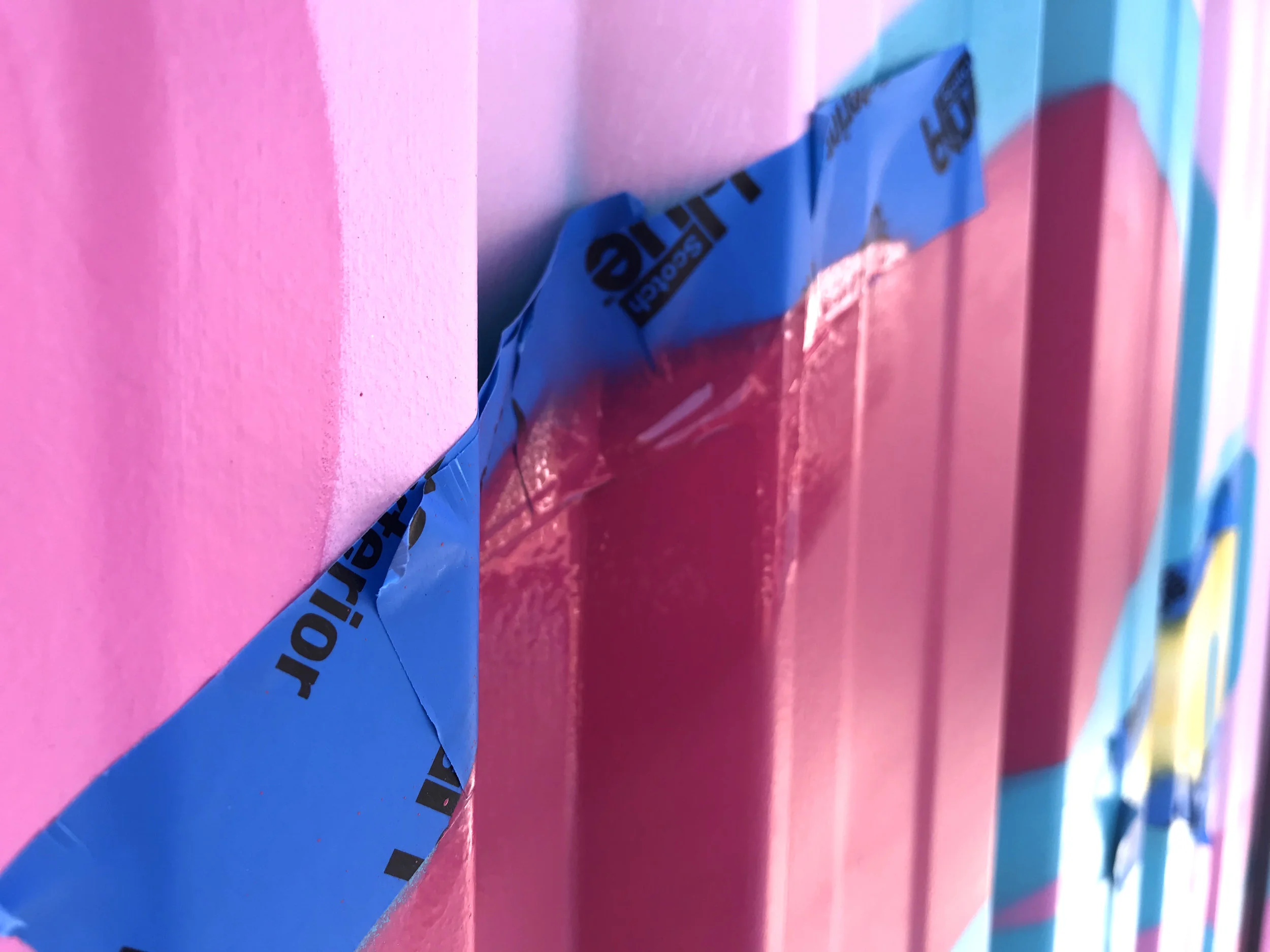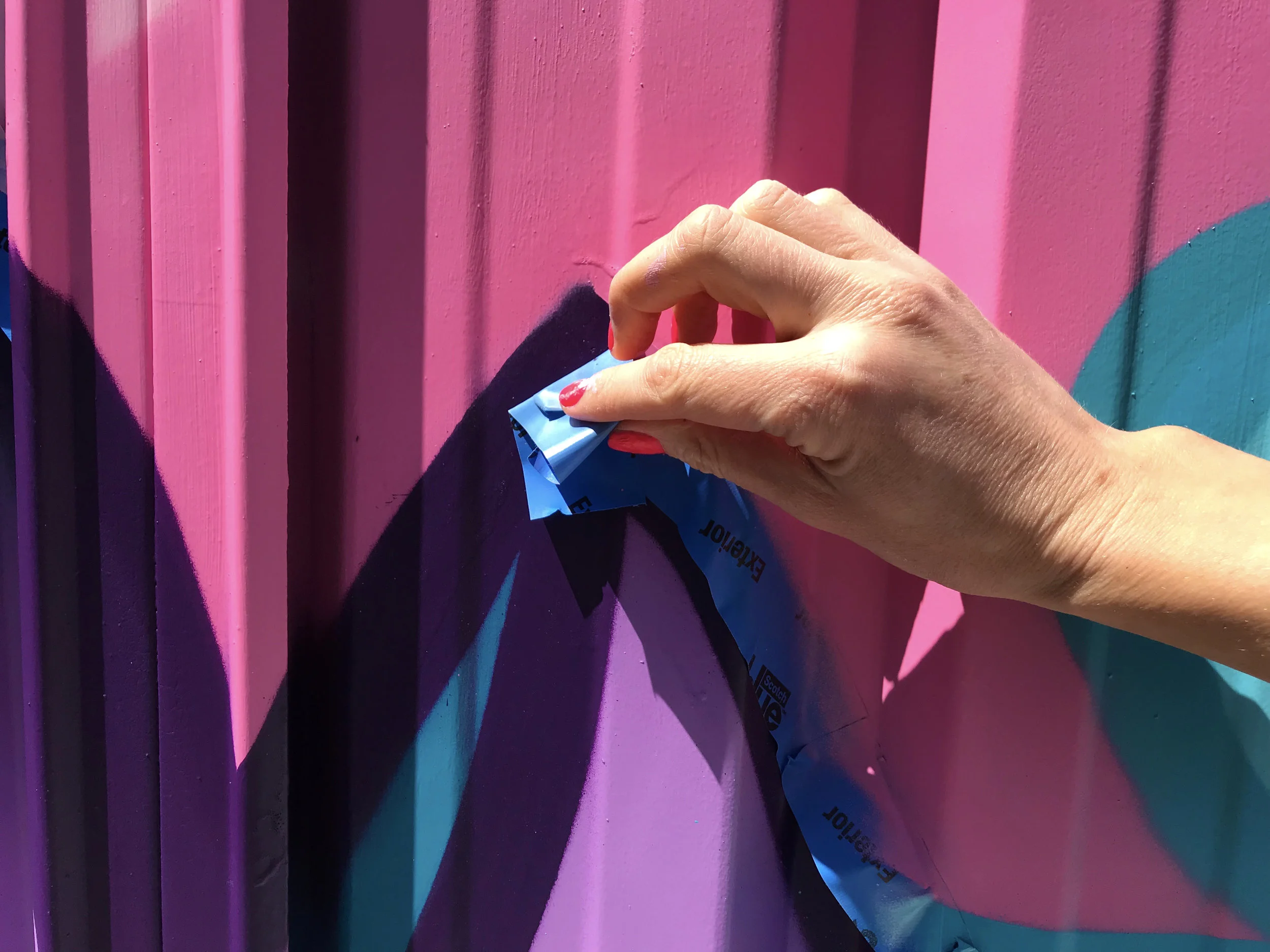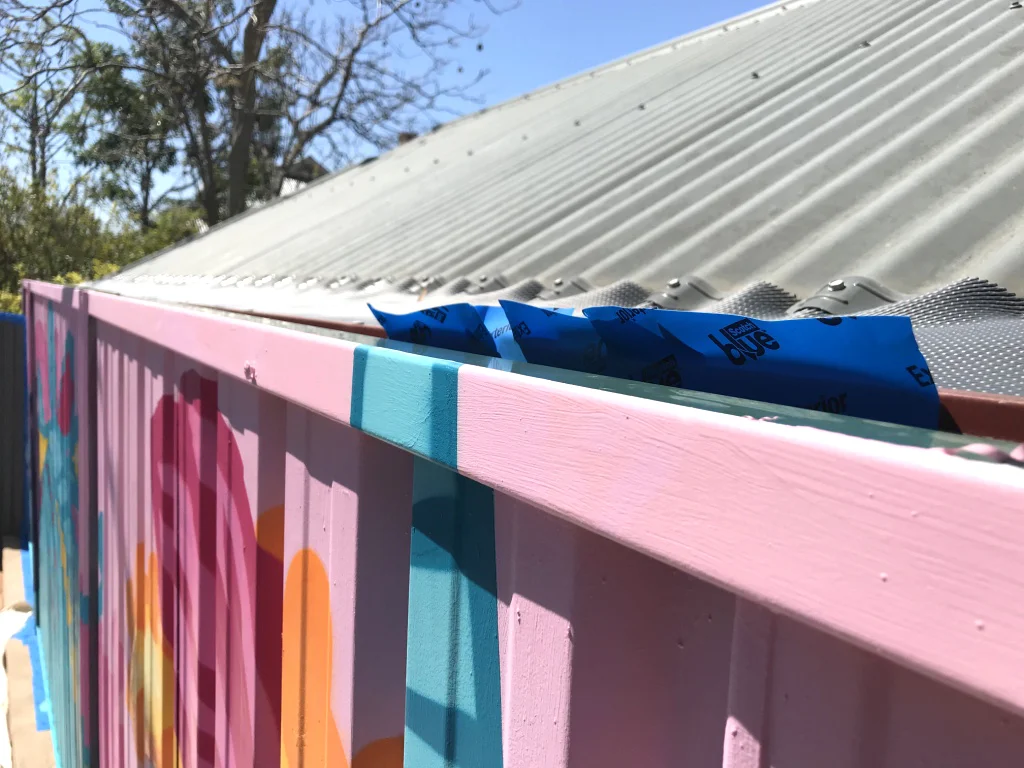I’m going to let you in on my biggest painting secret… I use tape!!! Usually when I’m taking progress shots I avoid showing the tape in an effort to make you believe that I’m so unbelievably talented, that I can actually use spray paint and not overspray on windows, bricks, floor or other surfaces. I had this belief that if you know I use the stuff you might respect my work less. Well, stuff that! This blog is all about being transparent and sharing tips and tricks that you can use.
When you’re using tape, these are 8 tips to make your work look sharp.
NUMBER 1: DON’T STICK IT ALL DOWN.
Rather than smoothing out the whole strip of tape, just smooth out the edge that you are going to paint. This allows the paint to sit up a bit and provide even more protection to your work because it stops the overspray. Also, when it’s dry you can more easily pull it off.
NUMBER 2: DON’T RELY ON THE TAPE.
If you’re about to start a project, don’t plan your concepts with the tape being used for all your line work. Work on your technique to use the aerosol nozzle at different angles and distances from the surfaces. That way you can actually create smooth lines yourself and they will look better. I only use the tape for those intersecting points where you can’t cut back on the colour. It also works well on a really uneven surface like a fence or corrugated iron.
NUMBER 3: REMOVE IT WHEN IT’S DRY.
If you’re patient you will get a better result. Plus, aerosol doesn’t take long to dry, so spray, then work on another area, then come back and pull it off.
NUMBER 4: REMOVE IT AND SPRAY A LITTLE AGAIN.
Don’t expect the tape to magically make your piece AMAZING. It’s likely that once you’ve removed the tape, it might actually pull some paint off or need a little extra spray over it to make it match in with the rest of your mural.
NUMBER 5: STAND THE TAPE UP.
For some areas, you will get a much better result and also use less tape if you make the tape ‘stand up’. This technique works really well on edges of walls, or in this case the top of the fence. For this project, it meant any overspray didn’t go on to the roof. It encourages the paint particles to go up and they will dry, rather than floating down and sticking to the roof surface.
NUMBER 6: IT’S ALL IN THE PREPARATION.
Take your time getting the surface ready. Doesn’t matter what you are painting, it really is ALL in the preparation. You need to allow time to clean the surface, you may need to undercoat and some jobs require sanding. Also allow time for taping! This always takes longer then I expect. But it’s so worth it. While I’m doing this, I find it’s a great time to get to know the surface and scale of the wall before you start painting. It took me a while to understand the groves and directions of this fence and the angles I needed to paint. Preparing the surface is not wasted time. It helps you get in sync with the wall. (Sounds very new age, but it’s true. BE ONE WITH THE WALL!) Put on some good tunes or a podcast and the time will fly.
NUMBER 7: USE THE GOOD STUFF.
The quality blue tape is kind of expensive, but trust me, use the good stuff! I use Scotch Blue tape and buy it from Bunnings. For outdoor jobs I’ve started using the exterior plastic blue tape and I love it! For inside jobs the interior blue tape works really well. If you try and use cheap masking tape the adhesion is too strong and will pull off paint when removed and doesn’t give the same smooth lines. This brand is also very easy to tear and manipulate and rarely gets stuck together while taping. I use a variety of tape thickness depending on the job. And remember to account for the cost of tape in your budget.
NUMBER 8: DON’T PAINT IT TOO THICK.
When you are painting a pattern or masking a line, try not to paint too many layers. Keep it thin. If you have thick paint, when you remove the tape you’ll notice the paint sits higher than the colour next to it and you’ll be able to feel the height difference. You might make it work for your design, but I try and avoid it. If some areas are thicker, you will see a line and it won’t be consistent with the rest of the free hand painting.
FINAL RESULT
I absolutely loved working on this project. The surface was quite a challenge, but I learnt a lot and I’m proud of the finished product. Here’s a final pic for you! Look at the pretty reflection in the water too! This is a pool I want in my backyard! Find out more about painting on corrugated iron here.
Photo by Leah Grant.











